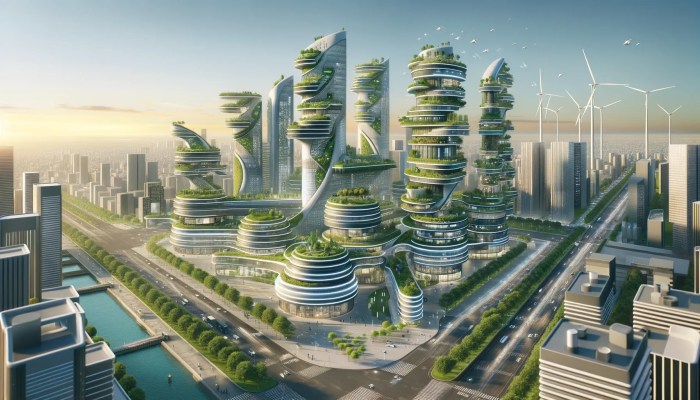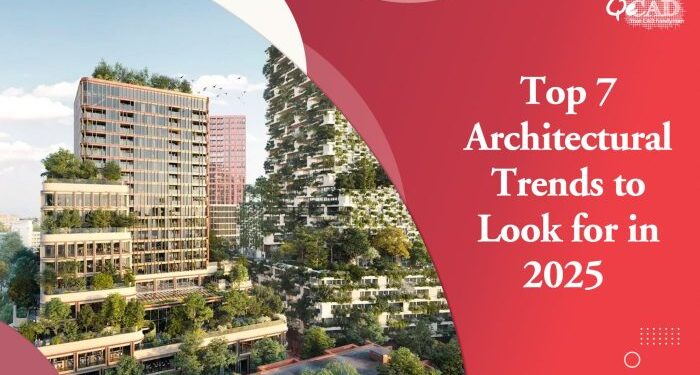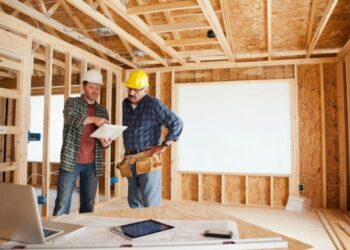As we look ahead to 2025, the landscape of sustainable architecture is evolving rapidly. From innovative materials to energy-efficient designs, the future holds promising trends that will shape the way we build our cities and homes. Join us on a journey through the key aspects of sustainable architecture trends in 2025, where creativity meets sustainability for a greener tomorrow.
In the realm of sustainable architecture, the use of cutting-edge materials, energy-efficient designs, green technologies, and biophilic elements are paving the way for a more environmentally conscious approach to construction.
Sustainable Materials

In the realm of sustainable architecture, the use of eco-friendly materials has become increasingly popular as a way to reduce environmental impact and promote a more sustainable future. Let's explore some of the emerging sustainable materials that are expected to shape the architecture trends in 2025.
Bamboo
Bamboo is a versatile and sustainable material that has gained traction in the construction industry. It is known for its rapid growth rate, making it a renewable resource that can be harvested without causing deforestation. Bamboo offers a lightweight yet durable alternative to traditional building materials like wood or concrete.
Recycled Plastic
Recycled plastic is another sustainable material that is being used in architecture to reduce plastic waste and promote recycling. By repurposing plastic bottles, bags, and other waste materials, architects can create building components that are both environmentally friendly and cost-effective.
Rammed Earth
Rammed earth construction involves using a mixture of earth, gravel, and other natural materials to create sturdy walls and structures. This ancient building technique is making a comeback in modern architecture due to its sustainable nature and thermal mass properties, which help regulate indoor temperatures.
Benefits of Using Sustainable Materials
- Reduced environmental impact
- Promotion of recycling and waste reduction
- Enhanced energy efficiency in buildings
- Healthier indoor air quality
Drawbacks of Using Sustainable Materials
- Higher initial costs compared to traditional materials
- Limited availability in some regions
- Requires specialized knowledge for installation
- Potential durability issues over time
Cost-effectiveness of Sustainable Materials
While sustainable materials may have higher upfront costs, they often result in long-term savings through reduced energy consumption, lower maintenance costs, and improved occupant health. When considering the lifecycle costs of a building, sustainable materials can be a cost-effective choice in the long run.
Energy-Efficient Design
Energy-efficient design plays a crucial role in sustainable architecture by reducing energy consumption, minimizing environmental impact, and lowering operating costs for buildings. By incorporating innovative design strategies and technologies, architects can create spaces that are not only eco-friendly but also comfortable and cost-effective for occupants.
Innovative Energy-Efficient Designs
- Passive Solar Design: Utilizing the sun's energy for heating and lighting through strategic building orientation, shading, and insulation.
- Green Roofs: Installing vegetation on rooftops to provide natural insulation, reduce heating and cooling needs, and improve air quality.
- Net-Zero Energy Buildings: Structures that generate as much energy as they consume, often through renewable sources like solar panels and wind turbines.
- Smart Building Systems: Using sensors, automation, and energy management systems to optimize energy usage based on occupancy, weather conditions, and other factors.
Impact on Building Sustainability
Energy-efficient designs contribute significantly to a building's overall sustainability by reducing greenhouse gas emissions, decreasing reliance on fossil fuels, and promoting a healthier indoor environment. These designs not only benefit the environment but also enhance the long-term value and performance of the building while providing a better experience for occupants.
Green Technologies
Green technologies play a crucial role in enhancing the sustainability of buildings by reducing environmental impact and promoting energy efficiency. These innovative technologies are constantly evolving to meet the growing demand for eco-friendly solutions in architecture.
Solar Panels
- Solar panels harness sunlight to generate electricity, reducing reliance on traditional power sources and lowering carbon emissions.
- Integration of solar panels on buildings helps in achieving energy independence and cost savings over time.
- Challenges include initial costs, space requirements, and efficiency limitations in regions with limited sunlight.
Green Roofs
- Green roofs are covered with vegetation, providing insulation, reducing heat island effect, and improving air quality.
- They help in managing stormwater runoff and extending the lifespan of the roof membrane.
- Challenges involve structural considerations, maintenance costs, and ensuring proper irrigation and drainage.
Smart Building Systems
- Smart building systems use sensors and automation to optimize energy use, lighting, and temperature control.
- Integration of these systems improves occupant comfort, reduces energy waste, and enhances building performance.
- Challenges include data security risks, compatibility issues, and the need for specialized expertise for installation and maintenance.
Biophilic Design

Biophilic design is an innovative approach that integrates nature and natural elements into the built environment to enhance the overall well-being of occupants. This design philosophy recognizes the innate human connection to nature and seeks to create spaces that mimic natural environments, ultimately improving the quality of life for those who inhabit them.
Popular Biophilic Design Elements in 2025
- Living green walls that incorporate plants and vegetation into interior spaces, promoting better air quality and a sense of tranquility.
- Natural light optimization through strategically placed windows, skylights, and light wells to reduce the reliance on artificial lighting and create a connection to the outdoors.
- Use of natural materials such as wood, stone, and bamboo to bring elements of nature indoors and create a sense of warmth and comfort.
- Integration of water features like indoor fountains or reflecting pools to introduce calming sounds and visual stimuli that mimic natural environments.
Benefits of Biophilic Design
Biophilic design has been shown to have numerous benefits for occupants, including improved mental health, increased productivity, and enhanced overall well-being. By incorporating elements of nature into the built environment, biophilic design helps reduce stress, boost creativity, and foster a deeper connection to the natural world.
This approach not only enhances the aesthetics of a space but also contributes to a healthier and more sustainable living environment.
Final Review
In conclusion, the sustainable architecture trends in 2025 are not just about constructing buildings; they represent a shift towards a more sustainable and eco-friendly future. By embracing these trends, we can create spaces that not only benefit the environment but also enrich the lives of those who inhabit them.
Let's look forward to a greener, more sustainable world in 2025 and beyond.
Key Questions Answered
What are some benefits of using sustainable materials in construction projects?
Using sustainable materials can reduce environmental impact, improve indoor air quality, and contribute to long-term cost savings.
How do energy-efficient designs impact a building's overall sustainability?
Energy-efficient designs reduce energy consumption, lower utility costs, and decrease greenhouse gas emissions, enhancing the overall sustainability of a building.
What challenges are faced when integrating green technologies into architectural designs?
Challenges include high initial costs, limited availability of certain technologies, and the need for specialized expertise in implementing green technologies effectively.
Why is biophilic design significant in sustainable architecture?
Biophilic design connects occupants with nature, enhances well-being, and promotes a sense of harmony with the environment, making it a crucial aspect of sustainable architecture.













